| |
|
Warrior's 3,900 Year Old Suit of
Bone Armour Unearthed in Omsk |
|
Archeologists are intrigued by the discovery of the
complete set of well-preserved Bone Armour which is seen as having
belonged to an Elite Warrior. The Armour was in perfect condition - and
in its era was "More Precious than Life", say experts. It was buried
separate from its owner and no other examples of such battle dress have
been found around Omsk. |
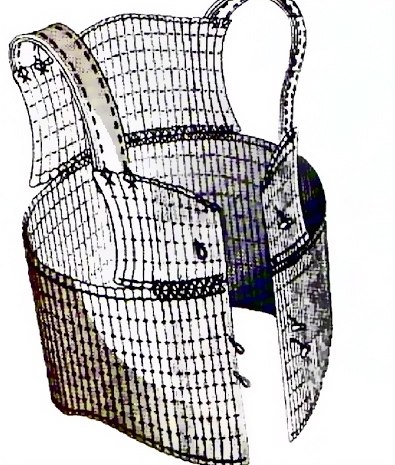 |
Nearby archeological finds are from the Krotov culture, who lived in
a forest steppe area of Western Siberia, but this bone armour more
closely resembles that of the Samus-Seyminskaya culture, which
originated in the area of the Altai Mountains, some 1,000 km to the
south east, and migrated to the Omsk area. The armour could have been a
gift, or an exchange, or was perhaps the spoils of war.
Boris Konikov, curator of excavations, said: 'It is unique first of all
because such armour was highly valued. It was more precious than life,
because it saved life.
'Secondly, it was found in a settlement, and this has never happened
before. There were found separate fragments in burials.
Currently the experts say they do not know which creature's bones were
used in making the armour. Found at a depth of 1.5 metres at a site of a
sanatorium where there are now plans to build a five star hotel, the
armour is now undergoing cleaning and restoration.
'We ourselves can not wait to see it, but at the moment it undergoing
restoration, which is a is long, painstaking process. As a result we
hope to reconstruct an exact copy', Boris Konikov said. |
Scientist Yury Gerasimov, a research fellow of the Omsk branch of
the Institute of Archaeology and Ethnography, said: 'While there is no
indication that the place of discovery of the armour was a place of
worship, it is very likely. Armour had great material value. There was
no sense to dig it in the ground or hide it for a long time - because
the fixings and the bones would be ruined.
'Such armour needs constant care. At the moment we can only fantasize -
who dug it into the ground and for what purpose. Was it some ritual or
sacrifice? We do not know yet.'
'Now we need to clean these small fragments of bone plates, make
photographs and sketches of their location, and then glue them in a full
plate.'
He is certain that the armour belonged to a "Hero", an "Elite Warrior
who knew special methods of battle" and would have given good protection
from weapons that were used at the time - bone and stone arrowheads,
bronze knives, spears tipped with bronze, and bronze axes.
The archeological site where the armour was found includes a complex of
monuments belonging to different epochs. There are settlements, burial
grounds, and manufacturing sites. Burials have been found here from the
Early Neolithic period to the Middle Ages.
The site is beside the Irtysh River. |
|
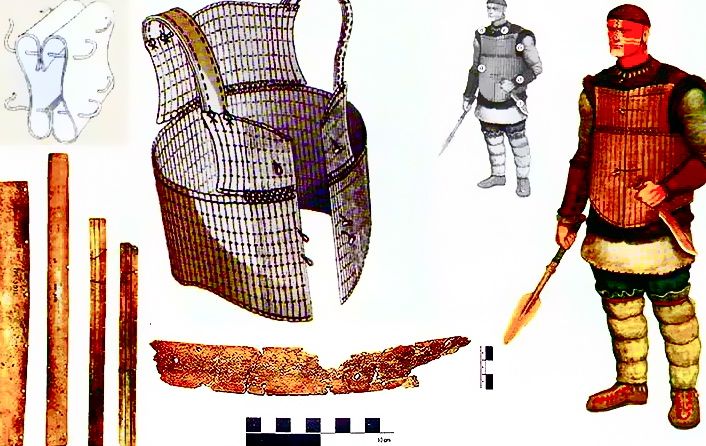 |
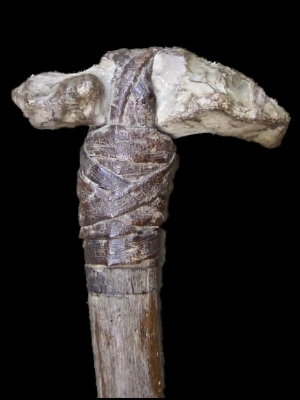 |
 |
 |
As woodlands expanded over much of Eastern Australia, Aboriginal
people in these areas adopted and relied on ground-edged stone hatchets
as a general purpose tool used for a variety of tasks: usage as a
weapon; to cut open the limbs of trees to get possums from hollows; to
split open trunks to get honey or grubs or the eggs of insects; to cut
off sheets of bark for huts or canoe; to cut down trees; to shape wood
into shields or clubs or spears; and, to butcher larger animals. The
importance of this tool to Aboriginal people in eastern Australia is
reflected by the fact there was at least one stone axe in every camp, in
every hunting or fighting party, and in every group travelling through
the bush.
The importance of ground edged stone hatchets was not confined to the
utilitarian; they were also valued trade items that extended the range
of social relationships well beyond the local group. Ethnographic
records indicate that such exchanges were usually embedded in the
regional network of prestige, marriage and ceremonial activity
Ground-edge axes come in different shapes, but they are usually either
round or oval. They are sometimes rounded and narrow at one end, and
slightly broader and straighter at the cutting edge. Most are 50–200
millimeters long, 40–100 millimeters wide and 20–60 millimeters thick.
Typically they are ‘lens shaped’ when viewed from the side. |
 |
| They were made from hard types of stone, particularly basalt or
greenstone, and worn river pebbles. They may have one or more ground
cutting edges, and they may be polished smooth all over. The ground
surfaces are usually highly polished. They may have a groove pecked
around their ‘waist’ so it is easier to attach a handle. |
While ground-edge stone hatchets can be produced from a range of raw
materials including river cobbles, the best raw materials occur in
relatively few places and material suitable for ground-edged hatchets
was extracted from specific quarry locations selected for the
suitability of the material for its use for cutting, scraping, pounding
and chopping.
A number of quarries used to obtain material for ground stone hatchet
head production are known. These include Moore Creek in northern New
South Wales, Lake Moondarra in Queensland Mount Camel in Victoria. There
are, however, only a few quarries that were intensively worked and the
stone hatchet heads from these quarries were traded over long distances.
The ground stone hatchet heads and the quarries from which they were
obtained are the product of social and technological adaptations by
Aboriginal people in response to the expansion of woodlands during the
late Holocene. |
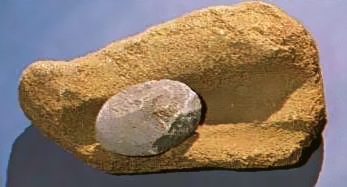
Stone Grinding Tool |
| Although we do not know exactly when this started it must have been
sometime in the last 1,500 years, the period during which Aboriginal
people in south-east Australia used greenstone hatchets. |

Greenstone Axe Blank |
The Mount William Stone Hatchet Quarry
William Buckley, an escaped convict living in the bush
from 1803 to 1833 provides the earliest European reference to the Mount
William Quarry, describing a hard, black stone from a place called Kar-keen
which was shaped into stone heads.
William von Blandowski, the first zoologist at the
Melbourne Museum, visited Mount William in 1854 and provides this
account of the quarry.
"The celebrated spot which supplies the natives with stone (phonolite)
for their tomohawks, and of which I had been informed by the tribes 400
miles distant. Having observed on the tops of these hills a multitude of
fragments of stones which appeared to have been broken artificially."
"Here I unexpectedly found the deserted quarries (kinohahm) of the
aboriginals." |
| "The quarries extend over an area of upwards of 100 acres . They are
situated midway between the territories of two friendly tribes, - the
Mount Macedon and Goulburn, - who are too weak to resist the invasion of
the more powerful tribes; many of whom, I was informed, travel hither
several hundred of miles in quest of this invaluable rock. The hostile
intruders, however, acknowledge and respect the rights of the owners,
and always meet them in peace" |
The Mount William stone hatchet quarry was an important source of
stone hatchet heads which were traded over a wide area of south-east
Australia.
The quarry area has evidence for both surface and underground mining,
with 268 pits and shafts, some several metres deep, where sub-surface
stone was quarried.
There are 34 discrete production areas providing evidence for the
shaping of stone into hatchet head blanks. Some of these areas contain
mounds of manufacturing debris up to 20 metres in diameter.
At Mount William, the number, size and depth of the quarry pits; the
number and size of flaking floors and associated debris; and the
distance over which hatchet heads were traded is outstanding for showing
the social and technological response by Aboriginal people to the
expansion of eastern Australian woodlands in the late Holocene.
Not all hatchet heads came from Mount William, although that quarry was
probably the most important in the region. Outcroppings of silcrete,
which was favoured for making small flaked implements, are known to
occur in the Keilor area and on the Mornington Peninsula.
Ground-edged Stone Hatchet |
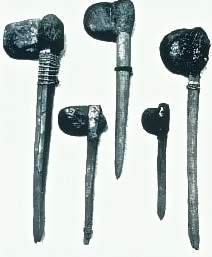
Australian Aboriginal Stone Axes |
 |
Ground-edged Stone Hatchet
Sturt Creek (Western Australia)
The head is of a very dark and hard green stone, ground
to a fine edge, and is set between the two arms of the handle and held
in place with spinifex gum. The handle is formed by bending round
(probably by means of fire) a single strip of wood. The two arms of the
handle are sometimes held together by a band of hair-string.
Source: Spinifex and Sand by David W. Carnegie A
Narrative of Five Years' Pioneering and Exploration in Western Ausralia
1892 |
 |
|
Pacific Oceanic Tongan War Clubs |
| Tongan clubs have been used throughout pre and post-contact times.
Prior to the introduction of iron materials by Captain Cook and other
sailors, sharks tooth, bone, and stone were used to etch designs onto
the clubs. However, after the introduction of iron materials such as
nails, club designs became very elaborate and decorative through the
ease of these tools. There are various types of clubs found throughout
Tonga. These clubs were used for warfare and traditional dance as in the
Me'etu'upaki.
In Western Polynesia, each island group developed a variety of styles
of long clubs made from ironwood (Casuarina equisetifolia). Many Tongan
clubs are elaborated with large areas of very skilful geometric
incising, frequently including small animal and human design motifs.
Other Tongan clubs are smooth-surfaced and have carved ivory, whalebone,
or pearl shell inlays usually in the form of circles, crescents and
stars, though other shapes are occasionally found. Fijians also use
inlay on some of their clubs, and it is thought that they adopted this
technique from the Tongan. It is likely that elaborately made clubs with
inlay, such as these, were ceremonial and served as badges of office
Tongan clubs can be differentiated from similar Fijian war club forms by
the presence of a lug for a wrist thong at the base of the butt. Tongan
clubs can be further differentiated from Samoan clubs, which also have a
lug, on the basis of lug form. In Samoan examples, the lugs are usually
triangular and occupy the entire width of the club base. In Tongan
clubs, these lugs are more often rectangular or arched and do not
traverse the width of the base. Sometimes Tongan weapons have holes
chiseled into the base for the attachment of wrist thongs |
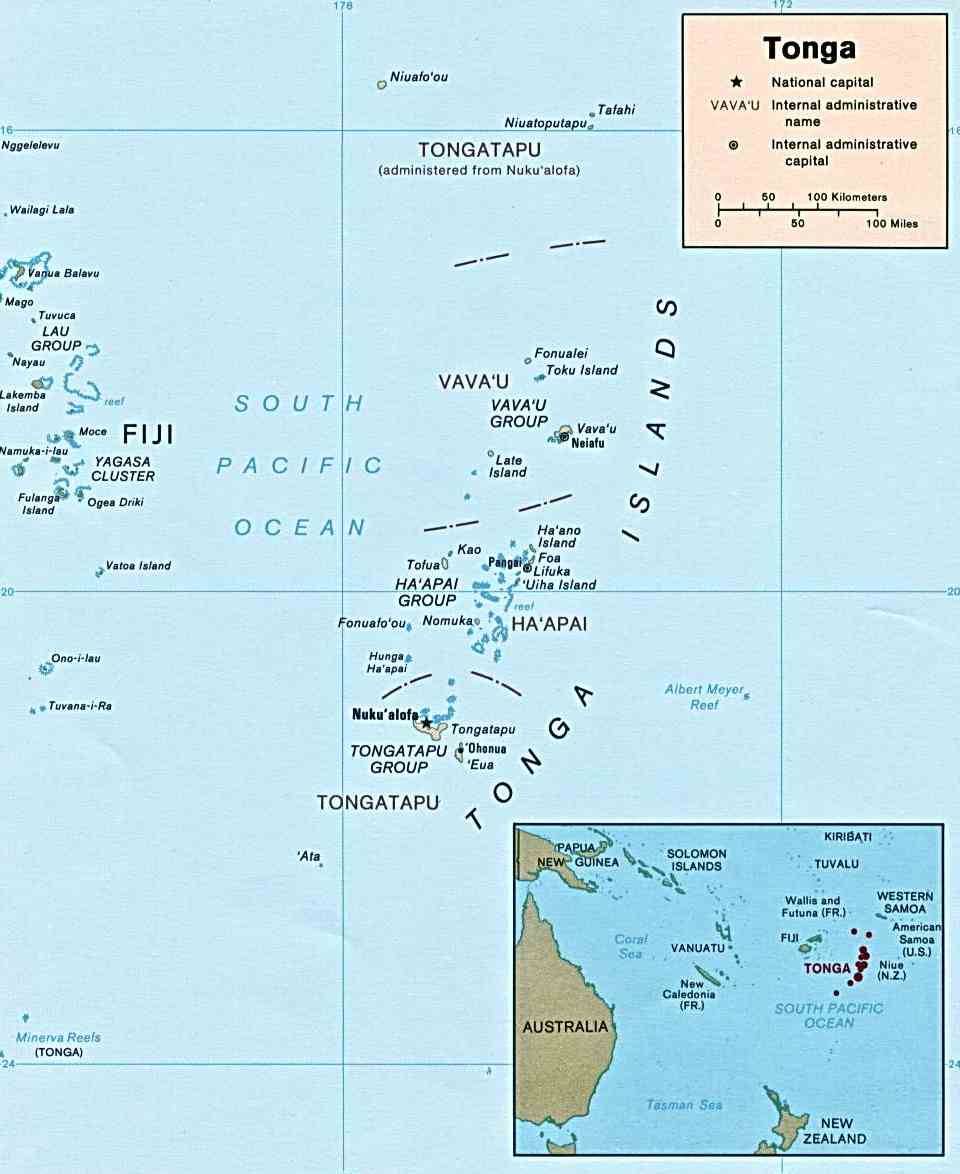 |
| According to A. Mills Sainsbury Research Unit, University of East
Anglia Tongan club “Akau comprise roughly 20 percent of the Polynesian
art collected on the Captain James Cook voyages of the 1770s;
consequently, they are the single most numerous class of documented 18th
century Polynesian artwork, heavily outnumbering all other Tongan
artifacts” |
|
Tongan Club |
Tongan Club Detail |
Throwing Club |
Paddle Club |
There are several
categories of Tongan War Clubs
1) Kolo - The short throwing club
2) Povai - The pole club which can be compared to a baseball bat in
shape with the same flared rounded head
3) There is also a variation of the povai with a flattened top to the
clubhead
4) Apa'apai - The club with a diamond-sectioned flat-topped head
sometimes referred to as a coconut-stalk club, although it is the actual
coconut leaf midrib which is meant
5)There is also a type of apa'apai that is similar but with a head that
is more spatulate and rounded at the upper end like a paddle club
6) Moungalaulau - The paddle club with its rounded upper end was often
distinguished by finely carved decoration over its entire surface and
was sometimes found with and without a transverse ridged collar or cross
rib. |
|
The above pictures are close ups of the apa'apai
variety club. The designs are intricate and vary from club to club |
|